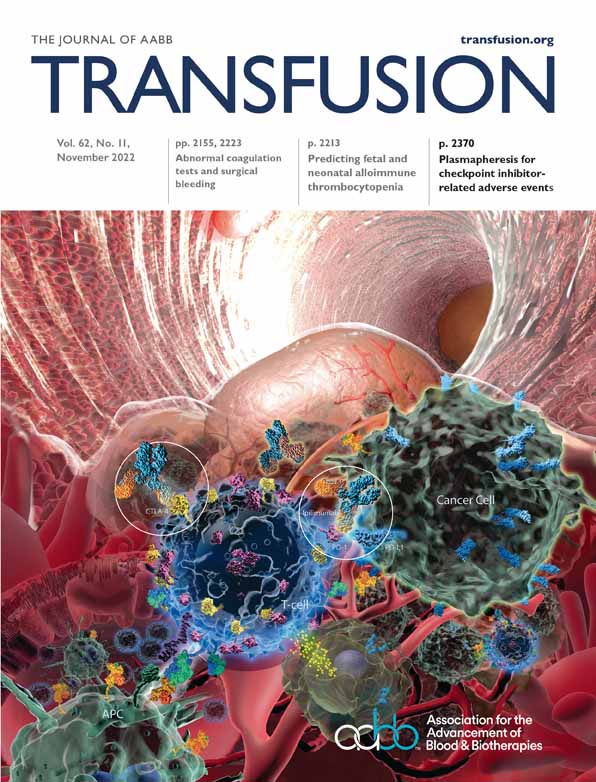Factor eight inhibiting bypass activity for refractory bleeding in acute type A aortic dissection repair: A propensity-matched analysis
Abstract
Background
Perioperative bleeding and transfusion have been associated with adverse outcomes after cardiac surgery. The use of factor eight inhibiting bypass activity (FEIBA) in managing bleeding after repair of acute Stanford type A aortic dissection (ATAAD) has not previously been evaluated. We report our experience in utilizing FEIBA in ATAAD repair.
Study Design and Methods
A retrospective review was undertaken of all consecutive patients who underwent repair of ATAAD between July 2014 and December 2019. Patients were divided into two groups, dependent upon whether or not they received FEIBA intraoperatively: “FEIBA” (n = 112) versus “no FEIBA” (n = 119). From this, 53 propensity-matched pairs of patients were analyzed with respect to transfusion requirements and short-term clinical outcomes.
Results
Thirty-day mortality for the entire cohort was 11.7% (27 deaths), not significantly different between patient groups. Those patients who received FEIBA demonstrated reduced transfusion requirements for all types of blood products in the first 48 h after surgery as compared with the “no FEIBA” cases, including red blood cells, platelets, plasma, and cryoprecipitate (p < .0001). There was no significant difference in major postoperative morbidity between the two groups. The FEIBA cohort did not demonstrate an increased incidence of thrombotic complications (stroke, deep venous thrombosis, pulmonary thromboembolism).
Discussion
When used as rescue therapy for refractory bleeding following repair of ATAAD, FEIBA appears to be effective in decreasing postoperative transfusion requirements whilst not negatively impacting clinical outcomes. These findings should prompt further investigation and validation via larger, multi-center, randomized trials.
CONFLICT OF INTEREST
Derek R. Brinster, MD, is a consultant for Terumo Aortic, Cook Medical, and W.L. Gore & Associates.




